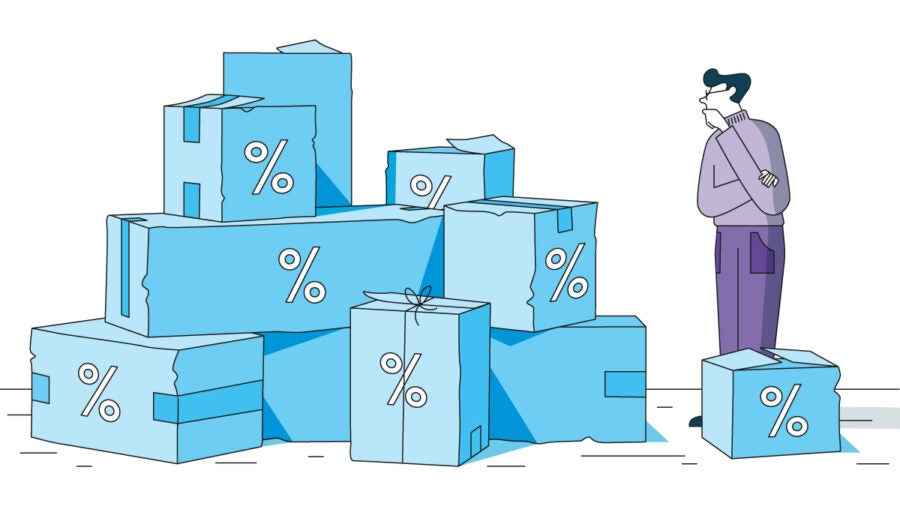
In May this year, Boohoo made headlines for agreeing to pay $197m (£159m) to settle a lawsuit accusing the retailer of using “deceptive” discounts across its fashion brands.
The California class-action lawsuit alleged that UK-based Boohoo used “fake and inflated comparison reference prices” to boost the depth of discounts offered on its sites, which include PrettyLittleThing, Nasty Gal and boohooMAN. This practice deceived customers into thinking they were bagging items at a deeply discounted price, argued those bringing the claim.
Boohoo denies the allegation and insists it has only agreed to settle the lawsuit “to avoid the uncertainties and expenses associated with ongoing litigation”. Nevertheless, it’s thought some 9.4 million people in the US could be eligible for payouts following the settlement.
Though it’s Boohoo in the spotlight on this occasion, the trend of ‘deceptive discounts’ or artificial inflation is of increasing concern for regulators. The UK government is set to hand the Competition and Markets Authority (CMA) new powers to clamp down on the misleading practice, which threatens to damage consumer trust in ecommerce. It could also serve to confirm concerns that some retailers are profiteering from the cost-of-living crisis.
How a lack of clarity enabled bad behaviour
Until 2008, the rules in the UK were “very clear cut”, explains Caroline Swain, senior associate at Charles Russell Speechlys. Items were required to be on sale at their full price for at least 28 days before a price reduction could be promoted as a discount.
But though seemingly straightforward, this approach was seen as open to exploitation, with retailers charging “ludicrously high prices” for the 28-day period before claiming items had been significantly reduced in sales. “That would be within the rules,” she explains.
The Consumer Protection from Unfair Trading Regulations (CPRs), introduced in 2008, ditch such hard-and-fast rules to ban misleading practices more broadly. This change in approach requires the retailer to ask itself whether the average consumer would be misled by its prices. In theory, it’s a step in the right direction. But “as with all principles-based approaches, it’s down to interpretation,” observes Swain.
In short, it has created a lack of clarity around exactly what does and doesn’t constitute a dodgy discount. The Chartered Trading Standards Institute was forced to issue a guidance note in 2016 with further details for retailers, after complaints about misleading discounts in the grocery sector.
Lower-quality goods are introduced at an artificially high initial price, only to be discounted later
Coupled with this potentially problematic change in the law has been a recent influx of less-established online retailers looking to take advantage of the ecommerce boom. “The bigger retailers for the most part come to us to make sure they’re doing it correctly,” says Swain. “It is normally newer, smaller businesses that are not doing things correctly and may be pushing prices up a bit more than they should.”
Why shoppers are more exposed than ever
“Artificial inflation is unfortunately incredibly common in retail and not just in the fashion industry,” believes Nick Drewe, founder of discount platform WeThrift. “Research has found that some independent sellers on Amazon Marketplace have been using this method for some time.” This comes at a time when shoppers are keen to cut costs. According to a recent OnePoll survey, 67% of respondents said the cost-of-living pressures made them more desperate to find the best deals, and 71% believe they are “saving money” by buying products that are on offer, even if the price reduction is not genuine.
This sales tactic is especially prominent around big shopping periods such as Black Friday, Cyber Monday and Christmas, says Liisa Matinvesi-Bassett, UK country manager at price comparison platform PriceSpy. One in 10 deals on Black Friday last year was fake, she says, with 25% of products more expensive than at the start of November. But it is a year-round problem. Of around 865,000 products listed on PriceSpy on 14 May, the average price drop for products at their lowest price point in the preceding 30-day period was 6%, according to the platform’s data. “What retailer will advertise a discount of just 6%?” asks Matinvesi-Basset.
How fake discounts erode consumer trust
It’s a further blow to consumers’ already fragile trust in online retailers. Research by YouGov and cybersecurity firm Akamai shows that 49% of shoppers don’t trust online retailers to even keep their details safe. Research by CX solutions firm Uberall shows that 67% of consumers trust local businesses more than ecommerce sites.
Recent allegations of ‘greedflation’, where retailers raise prices in inflationary times but fail to pass on cost reductions to customers when inflation falls, further diminish trust. “When customers discover they have paid inflated prices, it can damage their perception of the brand’s honesty. That can affect the brand’s reputation and repurchasing decisions,” says Professor Moira Clark, founder of the Henley Centre for Customer Management.
“There’s a lot of consumer distrust, not only in retailers but in the organisations that are meant to protect them,” says Marc Gander, founder of the Consumer Action Group. “Over the last 15 years, there has been a dismantling of consumer support services, including Citizens Advice and law centres.
“If we’re going to get trust back in retail, then we need to show the public that the authorities that are meant to be protecting consumers are holding retailers to account.”
What is the regulator doing?
There are moves to do just that. Under the new Digital Markets, Competition and Consumers Bill, the CMA would be empowered to issue substantial fines to retailers found to be in breach of consumer rights, including for artificial discounts. This is a clear sign that the government is aware of the trend of advertising misleading deals, says Swain. In March, the organisation also announced a campaign, fronted by consumer rights champion Martin Lewis, urging consumers to come forward with stories of retailer rip-offs.
But it shouldn’t take the threat of hefty fines to dissuade retailers from promoting discounts that could be construed as misleading, says Drewe. “Consumers need to know that the brands they are purchasing from are authentic and care about their customers,” he says. “If retailers don’t have a loyal consumer base, it can have catastrophic consequences for their business growth and sales.”

In May this year, Boohoo made headlines for agreeing to pay $197m (£159m) to settle a lawsuit accusing the retailer of using “deceptive” discounts across its fashion brands.
The California class-action lawsuit alleged that UK-based Boohoo used “fake and inflated comparison reference prices” to boost the depth of discounts offered on its sites, which include PrettyLittleThing, Nasty Gal and boohooMAN. This practice deceived customers into thinking they were bagging items at a deeply discounted price, argued those bringing the claim.
Boohoo denies the allegation and insists it has only agreed to settle the lawsuit “to avoid the uncertainties and expenses associated with ongoing litigation”. Nevertheless, it’s thought some 9.4 million people in the US could be eligible for payouts following the settlement.





